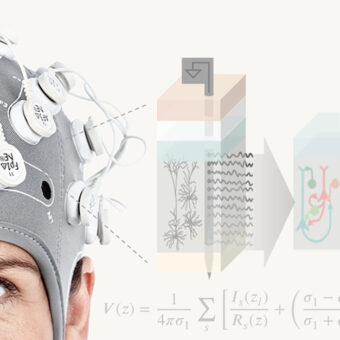In all cities, the air we breathe contains emissions from motor vehicles, industry, heating and commercial sources which have sometimes travelled long distances from sources located far afield. Ambient air pollution is the major environmental contributor to the global burden of the disease, contributing to an estimated 4.7 million deaths per year worldwide. Air pollutants can be defined as substances in the air that can affect negatively to humans and to the ecosystem. These substances can be found in the three estates; it means solid particles, liquid droplets, or gases. Major primary pollutants produced by human activity include sulphur oxides (SOx), nitrogen oxides (NOx), carbon monoxide and CO2 among others. In Starlab and Neuroelectrics we are concerned about how pollutants alter our physiological rhythms.
Ambient particles matter and nanoparticles have been seen as a cause of changing brain activity and influencing the central nervous system. Over the past decades, several studies have suggested that nanoparticles could arrive to the brain through the inhalation of these particles via olfactory nerves. Passage to the brain is a particular concern since it has been demonstrated that nanoparticles are potent inducers of oxidative stress. The reason why the oxidative stress is so worrying is because it has been related to the appearance of several neurodegenerative diseases such as Parkinson’s or Alzheimer’s disease. MRI evaluation of the brain reaches two results. Firstly, those children who live in more polluted locations revealed greater prefrontal lesions; and secondly, highly-exposed children and young adults showed upregulated inflammatory markers.
In particular diesel exhaust pollutants has been identified as an important and harmful source of health diseases. We can take as an example this study [1], in which a garage’s environment was simulated through controlled diesel exhaust exposure. Brain activity alterations could be measured in the EEG. Participants exposed to diesel exhaust for one hour presented a significant increase in fast waves activity (β2) in the frontal cortex. But not just our brain’s response is altered by pollutants exposure. Environmental exposure to suspended particles is also widely associated to cardiovascular diseases and to cardiac rhythm abnormalities. Recent studies suggest that pollutants are associated with a reduced heart rate variability, which in turn, is known as an independent risk factor for cardiovascular mortality.
There are many more evidences to be worried that link pollutants and adverse human health effects; but there are also many questions to be addressed yet. In Starlab we want to go a step forward and during the next years we will try to give an answer to some of these questions. Using Enobio as electrophysiological sensor we want to go beyond the state of the art in the study of electrophysiological biomarkers, which hopefully will reflect the effect of pollutants on human health. For this study we plan to use concurrent measures of electroencephalography (EEG), electrocardiography (ECG) and air pollution. We are particularly interested in the exploration of short and long term impact of pollutants and its correlation with cardiovascular and neurophysiological health. But we are not just looking at the effects of pollution. Otherwise, as it is well known that also plants and green areas help to mitigate air pollution and ameliorate the climate among many other benefits, we are also interested in the studio of how physiological changes are linked with the exposure to polluted green areas compared with non-green polluted areas. Our intention with this concrete part of the studio is measuring the benefits of parks and trees in urban areas.
Stay tuned for further updates in this study!
__
[1] [Crüts, B., van Etten, L., Törnqvist, H., Blomberg, A., Sandström, T., Mills, N. L., &Borm, P. J. (2008). Exposure to diesel exhaust induces changes in EEG in human volunteers. Part FibreToxicol, 5(4), 6.


